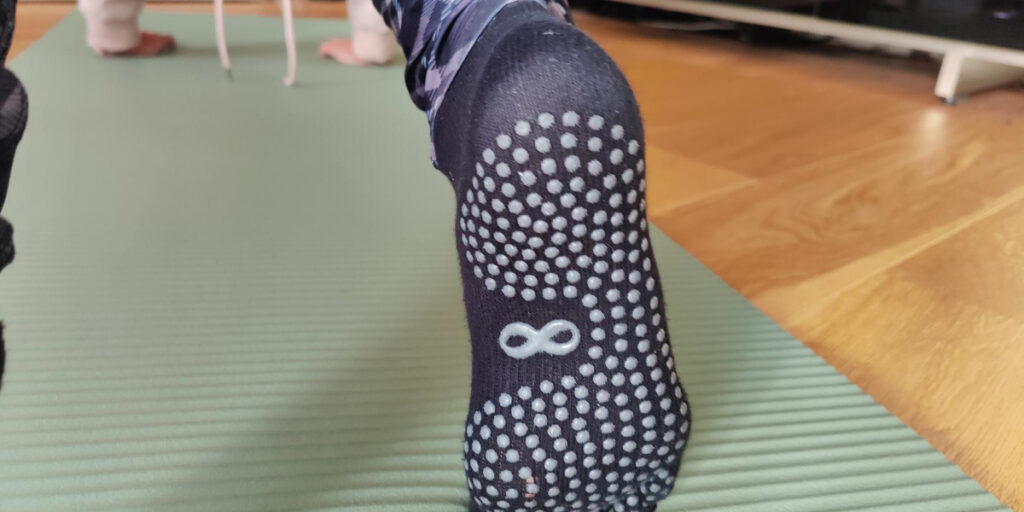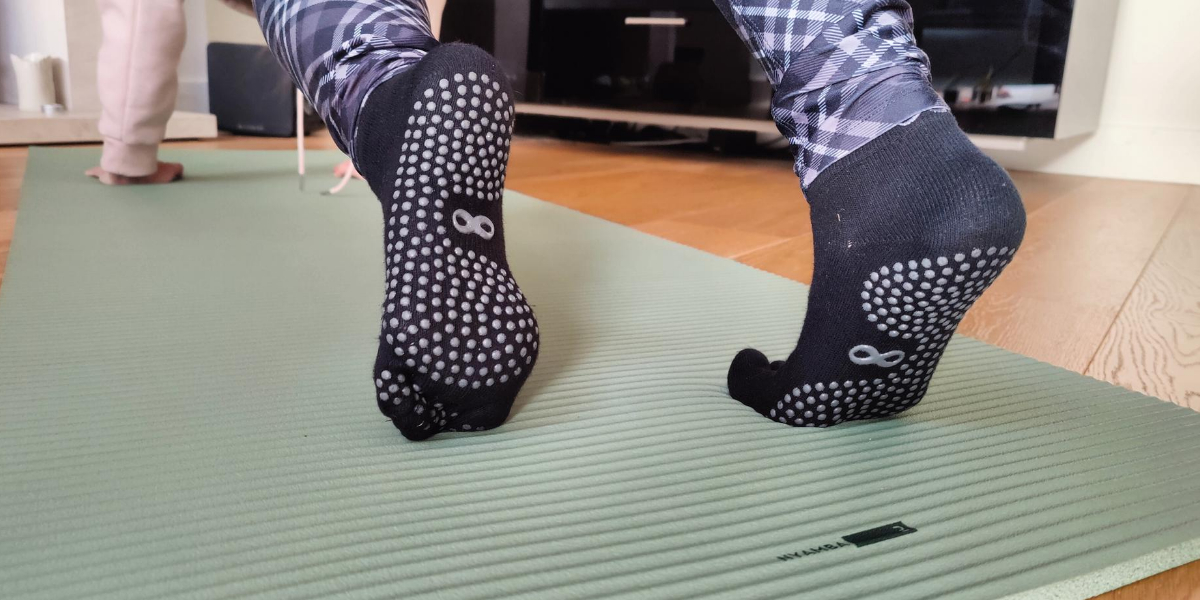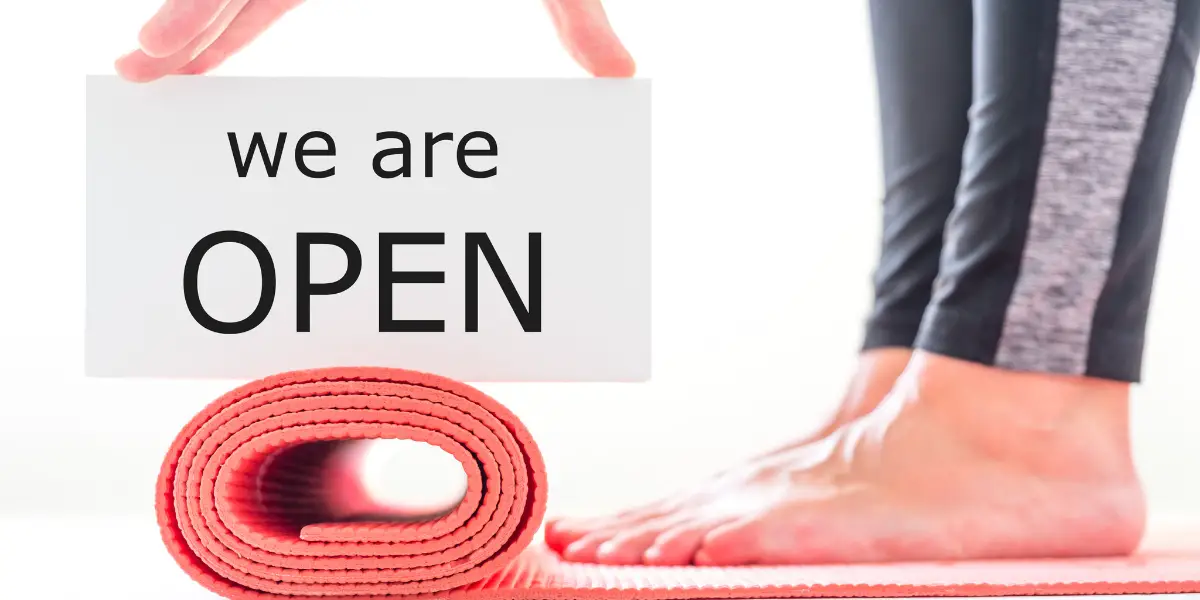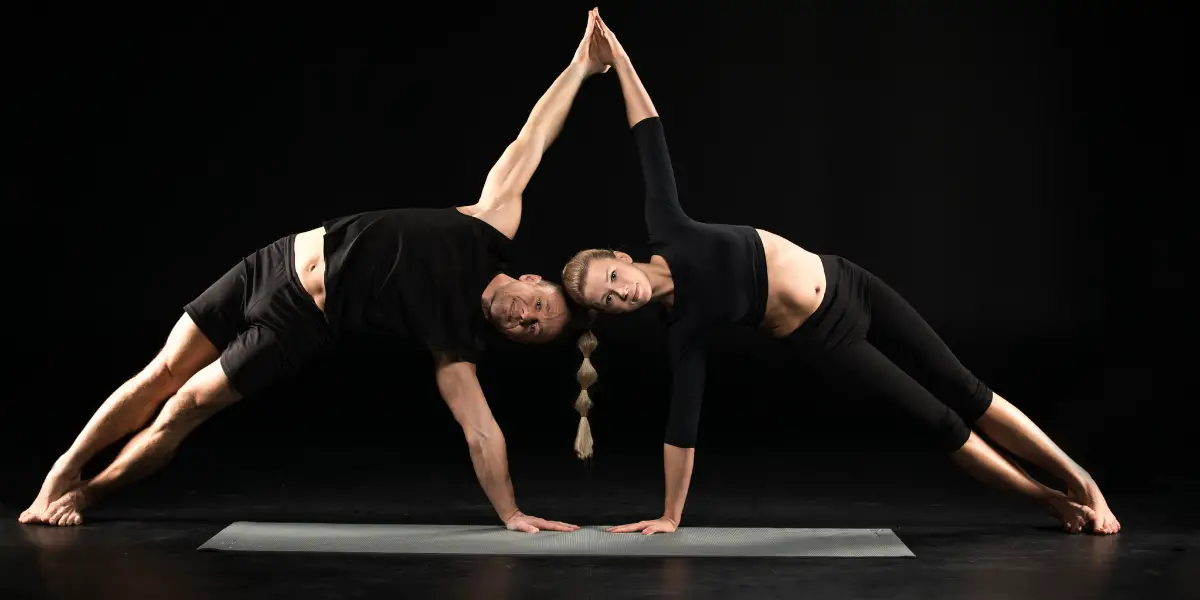When a new client visits for their first session they are sometimes confused when I ask them to remove their socks, but they see I’m still wearing some. “What kind of socks do you wear for Pilates?” is a common question, and the answer is that I’m not wearing ordinary socks, I’m wearing grippy socks!
Grippy socks are socks designed to improve your Pilates or yoga experience. They are typically made of a stretchy fabric that allows your feet to breathe and have non-slip rubber grips on the soles.
They make a big difference when practising Pilates on a wooden floor, such as in my Pilates studio. Like ordinary socks, grippy socks are available in a variety of colours, so you can match them to your workout gear.
Can you do Pilates without socks?
Wearing socks is a personal preference. The great thing about Pilates is how flexible it can be in terms of the equipment you use and the clothes you wear.
Yes, you can do Pilates without socks. Many people find that ordinary socks can be slippy on wooden floors and choose to go bearfoot instead to prevent them from slipping.
One place I recommend ditching the socks is if you do a Pilates session on a beach, feeling the sand on your feet as you set up really helps ground you before the session.
Why wear socks for Pilates?
While no socks is OK, there are some very good reasons to wear socks for Pilates.
Wearing grippy socks for Pilates will keep your feet from slipping, absorb sweat and stop your feet from getting cold.
You may find wearing footware is a requirement of some Pilates instructors and studios for health reasons.
The important thing to remember is that ordinary socks are slippy on surfaces such as hardwood floors, as used for the floor in my Pilates studio.
That isn’t always a negative, in fact I did an entire workout capitalising on this sliding ability, give it a try.
There are a few different options when it comes to choosing the right socks for Pilates. You can wear open-toe grips socks if you’re going to a club class, or go for some comfortable toeless socks that will give you better movement and posture support. Whatever style you choose, make sure that they provide grip so your feet don’t slip during challenging moves in the studio.
What are the benefits of wearing socks for Pilates?
We’ve already covered most of these, but to recap:
The main benefit is the additional grip, which will help prevent accidents and injuries. Wearing socks also reduces the change of creating an environment of sweaty mats that could become a breading ground for bacteria and fungi that could cause an infection.
As a Pilates instructor I’m very conscious of the health aspects, especially due to the pandemic outbreak. As such, I make sure to clean down all the equipment in between each client and I would recommend you make cleaning your equipment part of your routine as well.
Where to buy grippy socks
As with so much Pilates equipment, you’ll find suitable grippy socks are easy to get hold of at a very reasonable price. They’re readily available online from places like Amazon, Etsy or Ebay.
When shopping for Pilates socks keep in mind they may be called yoga socks, in practice they’re the same thing as Pilates socks, they’re just called that because yoga is seen as having a larger audience. Most typically I’ve found they’re called ‘grip socks’ or ‘grippy socks’ and will usually list that they’re good for yoga and Pilates.
The important thing to look out for is the rubberised grips on the bottom of the sock. Like most socks they’ll be made from cotton, but they have non-slip grips which you extra traction over normal socks.

There are two main types, a standard sock and a toe sock. The difference is that toe socks are like gloves for your feet. They’re a little more fiddly to put on, but they keep each toe separated from the others.
Final thought
Although they’re not necessary, wearing special grip socks to Pilates has a lot of benefits. If you wear them will come down to your personal preference, do you need that extra grip to ensure you don’t slip on the floor? Has the temperature dropped, and you need them for additional warmth? Do you want to add additional protection from any bacteria or fungus that might be present in a Pilates studio?
You may decide to leave them off for your home practice and only use them when attending a class. Check with your studio if they’ve any guidelines on what they expect you to wear, some may allow open-toe grip socks (typically made of 100% cotton and have anti-microbial material to keep your feet fresh for class – without smelling like chemicals).
Some studios recommend wearing toeless grip socks so that you can get a better workout experience. These provide plenty of grip support with open toes and are ideal for summer or if the studio where you take Pilates classes is hot.




